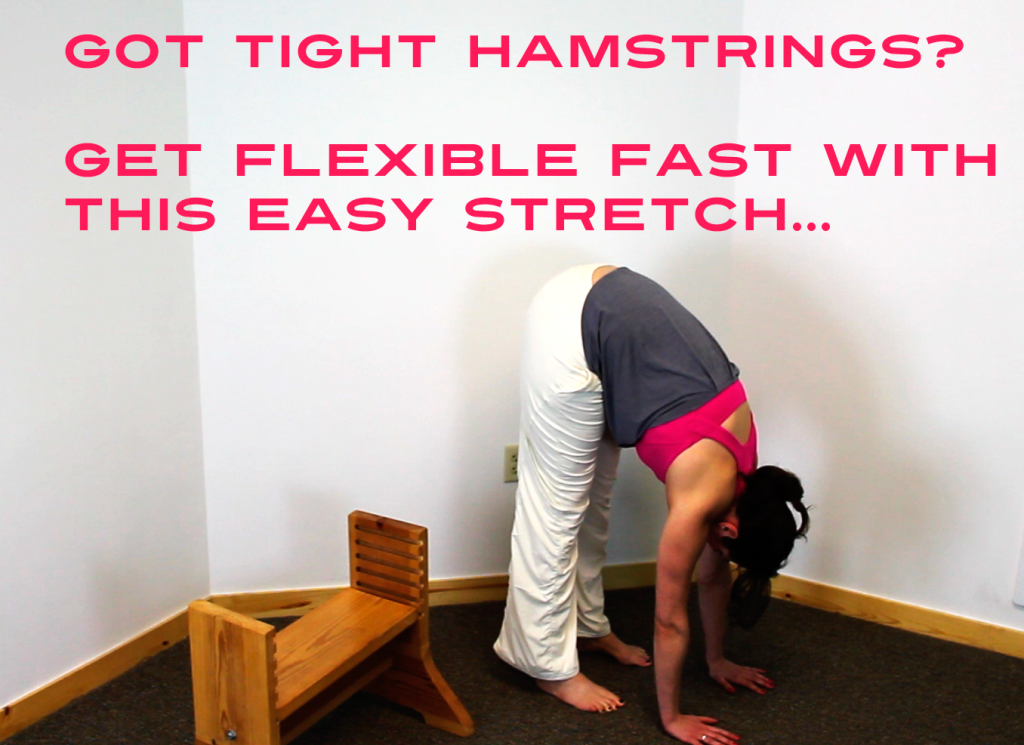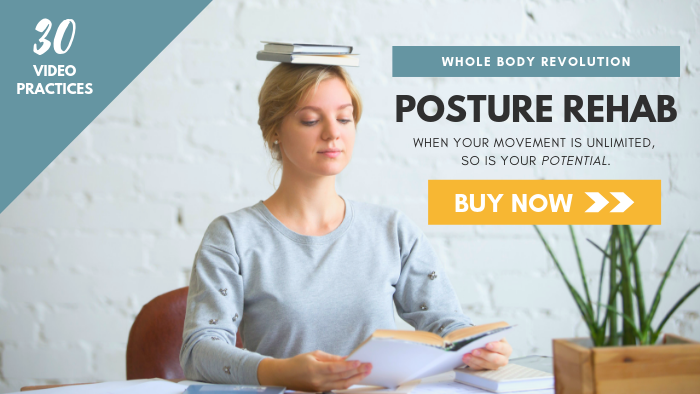
The other kids used to laugh at me in high school P.E. When you’re a kid, you’re supposed to be flexible, but I never was. While everyone else was easily putting their foreheads on their knees, I couldn’t even touch my toes.
And when I started rowing on the crew team in college, my coach yelled at me nearly every day to stretch my tight hamstrings that were sabotaging my technique and slowing the whole boat down.
Stretch I did, but no matter what I tried those tight hamstrings just wouldn’t let go. What little flexibility I gained from a session of good ol’ fashioned static stretching usually disappeared in a few hours or days, leaving me just as stiff and tight as before.
My legs wouldn’t even go straight because my hamstrings were so tight, keeping my knees permanently bent.
Fast forward to today and while I wouldn’t claim to be the most bendy person in the world, I can stretch my legs out in front of me, fold forward and put my head squarely on my knees with my fingers comfortably wrapped around my feet.
Ahhhhh…I can’t even begin to tell you how good it feels to be loose and limber. But that’s beside the point. What I want to share with you is the technique I used that finally got my hamstrings to let go – and it definitely wasn’t just “stretch more.”
Best of all, you can use this technique to increase flexibility in just 30 seconds. Don’t believe me? Keep reading and see for yourself.
Hamstrings are actually three large muscles that originate at the base of your pelvis on the ischial tuberosity, or sits bone (these are the two sharp bones in your butt that get quite sore when you’ve been sitting on bleachers for a long time).
The muscles travel down the back of the leg and attach below the knee joint, making these guys a multi-joint muscle. They both extend your hip (think ballerina doing an arabesque) and flex the knee (i.e. curl your heel up behind you). Hamstrings are the antagonist to your quadriceps, the four large muscles that run down the front of the leg. Antagonist means that they do exactly the opposite movements, so your quads flex your hips – that’s why they’re known as hip flexors – and extend your knee. Think kicking your leg straight out in front of you.
And speaking of, if you can’t extend your leg out in front of you, you’re a victim of tight hamstrings, especially if your back hunches over like Quasimodo when you try to do it. Likewise, if you can’t straighten your leg at the knee, your hamstrings are tight, and probably your gastrocs and soleus muscles as well (the muscles of your calf).
Fortunately, I have a quick fix for you. You see, it’s super important to remember when trying to increase flexibility that your muscles are plenty long enough. It’s your nervous system that’s freaking out, thinking you’re going to tear something or go to far into a stretch and not have the strength to get back out. You have to teach your brain to chill out a little.
The pain or pulling you feel when you stretch a muscle is actually something called the stretch reflex – your nervous system is telling the muscle you’re stretching to contract so it doesn’t get over lengthened, so, in essence, you’re fighting yourself. But, if we use a little trick called proprioceptive neuromuscular facilitation (PNF), we can override the stretch reflex and safely gain a few inches of flexibility relatively quickly.
This video shows you how to apply PNF principles to your hamstrings, and you’ll see the dramatic results you can get with just 30 seconds or so of stretching this way…
[sc name=”ppfl-cta”]
 I know you’d like to improve your flexibility. I hear this from my clients all the time! So far, I’ve showed you how to
I know you’d like to improve your flexibility. I hear this from my clients all the time! So far, I’ve showed you how to 